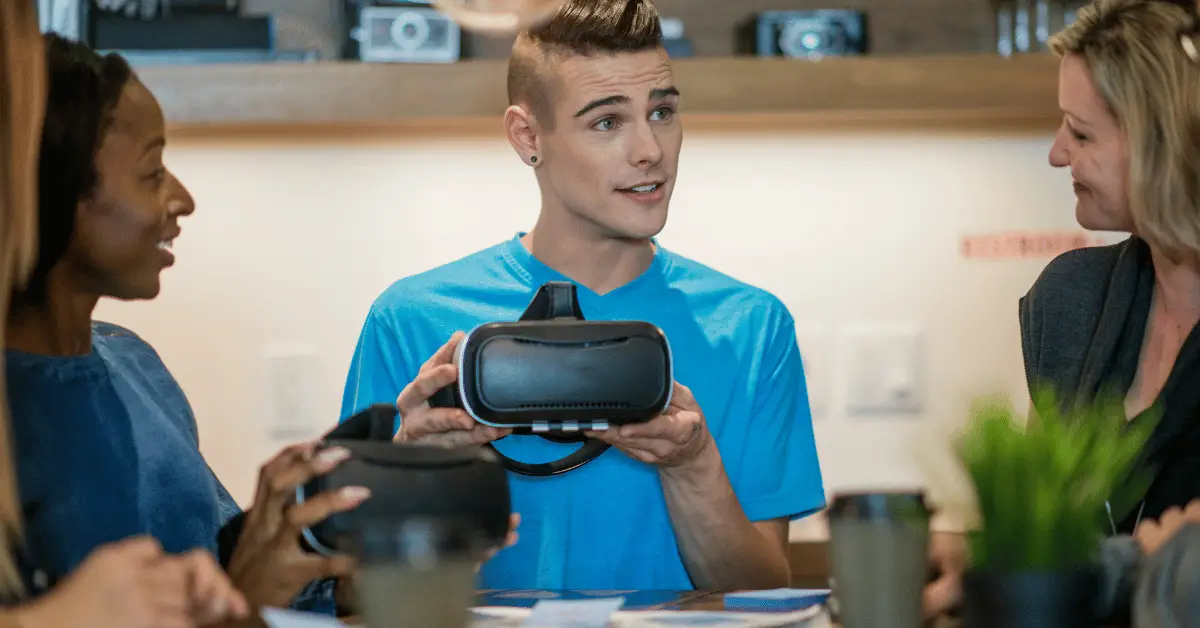Projectors have come a long way in recent years, with advancements in display technology improving image quality and performance. When it comes to choosing a projector, understanding the different types of display technology is essential. The three most common types of projector display technology are LCD, DLP, and LCoS. Each technology has its own strengths and weaknesses, and understanding these differences can help you choose the right projector for your needs. In this guide, we’ll take a closer look at each type of projector display technology and how they affect image quality and performance.
Table of Contents
How Does a Projector Work?
A projector is an electronic device that displays images, videos, or other media onto a large screen or surface. Here’s a step-by-step guide on how a projector works:
Step 1: Image Generation
The first step in projecting an image is to create it. This can be done through a variety of devices, such as a computer, laptop, DVD player, or even a smartphone.
Step 2: Signal Processing
Once the image is created, it needs to be converted into a format that can be projected onto a screen. This is where signal processing comes in. The projector takes the image signal and converts it into a format that can be displayed on a large screen.
Step 3: Light Source
The next step is to create the light that will project the image onto the screen. Most projectors use a lamp or LED bulb to create the light source.
Step 4: Reflector
The light is then directed towards a reflector, which bounces the light towards the lens.
Step 5: Lens
The lens is a crucial component of the projector, as it focuses the light onto the screen. The lens can be adjusted to change the size and shape of the projected image.
Step 6: Image Projection
Finally, the projected image is displayed on the screen. The quality of the image depends on factors such as the resolution of the image, the brightness of the projector, and the quality of the lens.
Overall, a projector works by taking an image signal, converting it into a format that can be displayed on a large screen, and then projecting the image onto the screen using a light source, reflector, and lens. By understanding how a projector works, you can choose the right device for your needs and ensure that you get the best possible image quality.
How does a projector work from a computer?
To connect a projector to a computer and display the computer’s screen on the projector, you will need to follow a few basic steps:
Step 1: Connect the Projector to the Computer Connect the projector to the computer using the appropriate cable. Depending on the type of projector and computer, this may be an HDMI, VGA, or USB cable.
Step 2: Turn on the Projector and Computer Turn on the projector and then turn on the computer.
Step 3: Configure Display Settings Depending on your computer and operating system, you may need to configure the display settings to extend or duplicate your computer’s screen onto the projector. To do this, go to the display settings in your computer’s system settings and select the projector as the display.
Step 4: Adjust Image Settings Once the computer and projector are connected, you may need to adjust the image settings to optimize the image quality. This can include adjusting the focus, brightness, and contrast of the projector to get the best possible image.
Step 5: Start Displaying the Computer Screen on the Projector With the projector connected and display settings configured, you can start displaying your computer screen on the projector. This will allow you to display presentations, videos, or any other content from your computer on the big screen.
Overall, connecting a projector to a computer is a straightforward process that can be done using a few simple steps. By following these steps and adjusting the image settings as needed, you can get the best possible image quality from your projector and display your computer screen on the big screen.
Conclusion
In conclusion, connecting a projector to a computer is a straightforward process that involves connecting the projector to the computer, configuring display settings, and adjusting image settings as needed. By following these steps, you can display your computer screen on the big screen and enjoy presentations, videos, or any other content on a larger scale. Understanding how a projector works and how to connect it to a computer can help you choose the right device for your needs and ensure that you get the best possible image quality.

